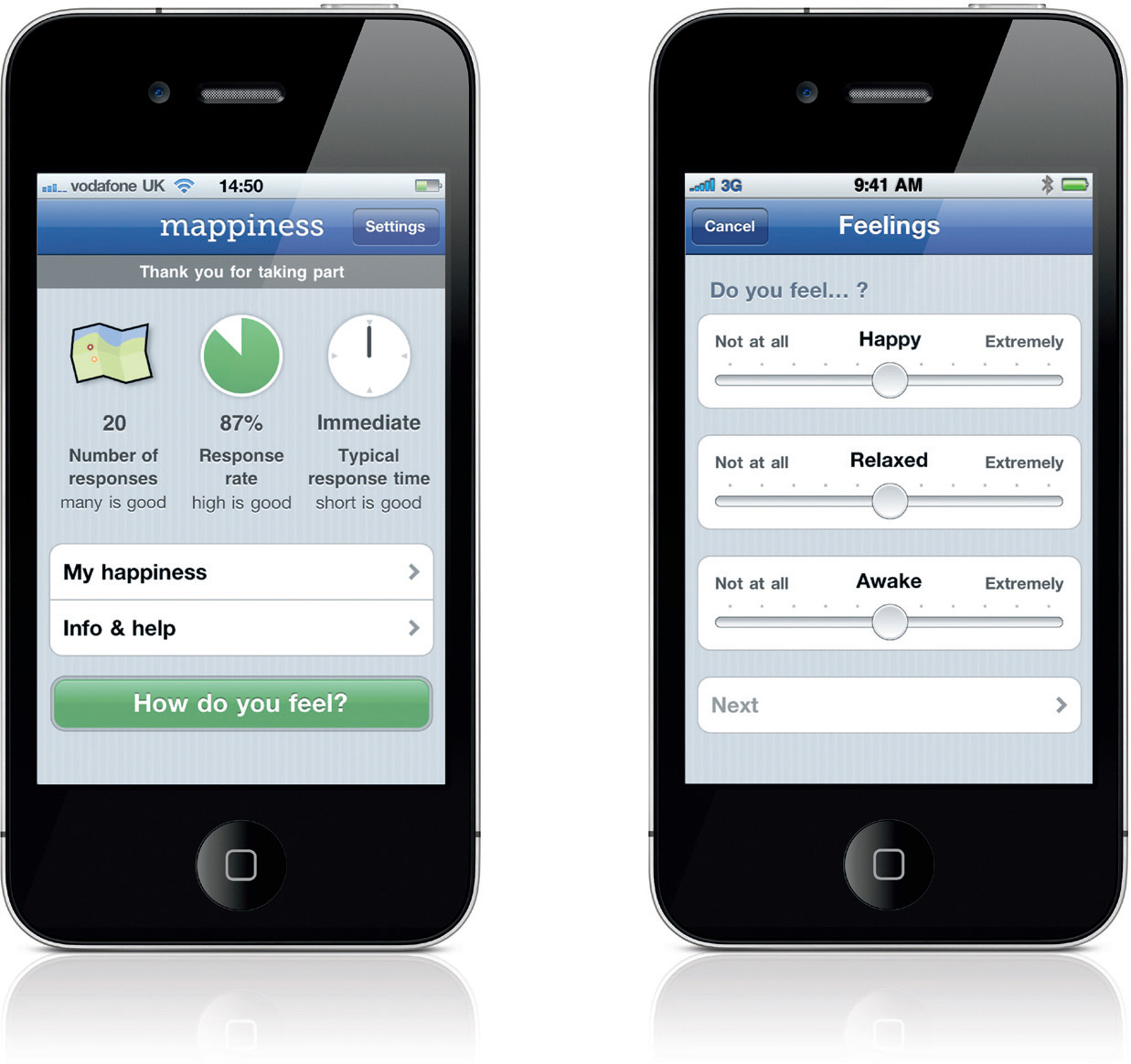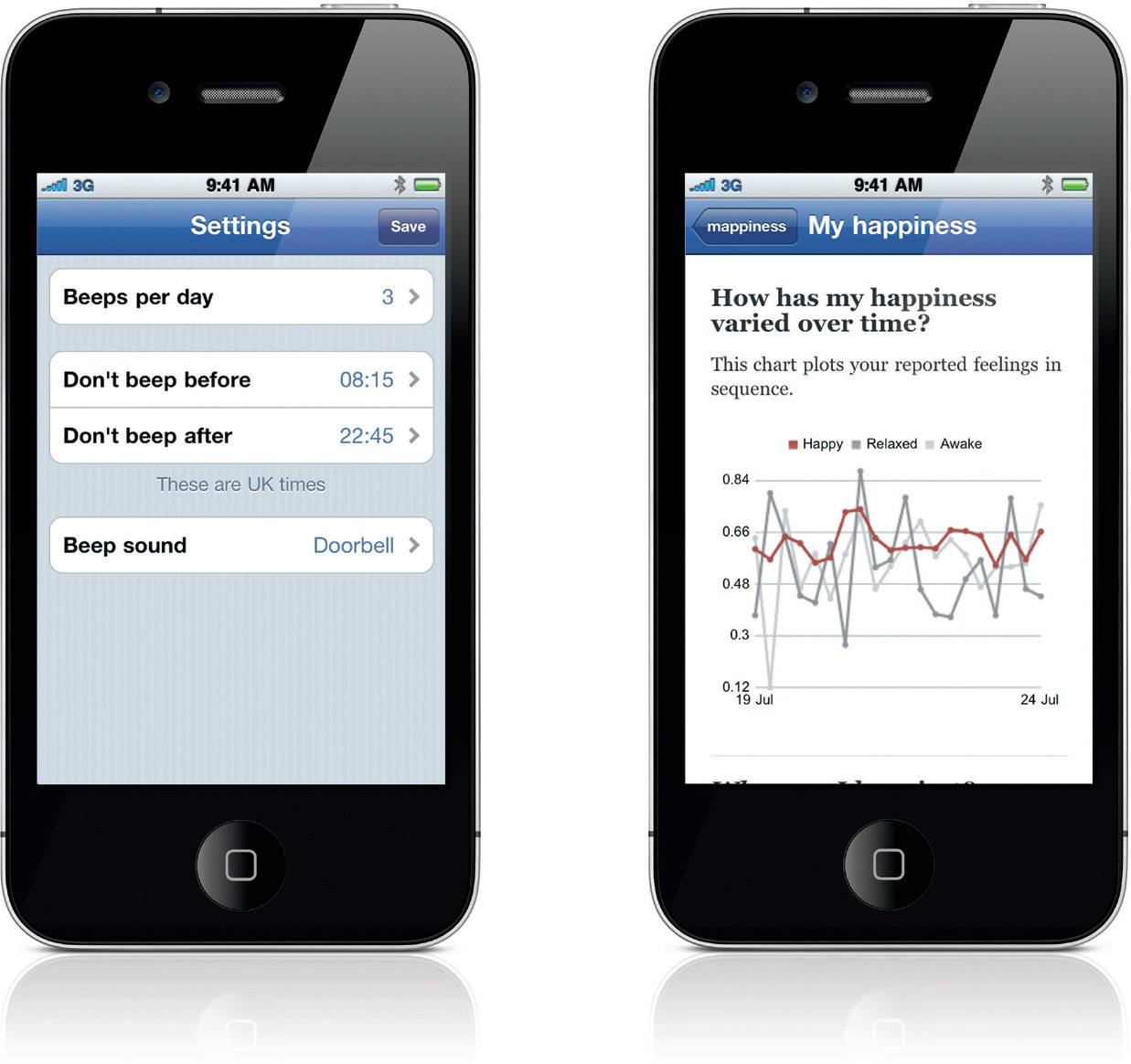RESEARCH METHOD
37 Experience Sampling Method

Experience sampling allows the designer to collect snapshots of behaviors, interactions, thoughts, or feelings from people who self-report in real time when signaled at random or timed intervals.
Experience sampling is a method well established in the design community, but in fact has a history in the social sciences.1 The method is extremely useful in exploratory and generative phases of design research, and is often coupled with diary or photo studies. New technologies and software are expanding the possibilities and flexibility of the method.
Experience sampling requires that the participant record or document something specific when signaled, typically by a device alarm. In the past, this signal was sent to a pager carried by the participant, hence the common reference to the method as a “beeper study.” Current technology allows other signaling opportunities, including new smartphone applications that can be programmed to alert the participant when it is time to make or send an entry.
The behaviors, interactions, thoughts, or feelings of interest to the design researcher are guided by clear instructions issued in advance, and are entered into a preestablished form, often a diary or journal. The entries may be general, such as “document your feelings right now,” or quite specific, such as “list the communication products you are currently using.” The journal should be well designed for portability and ease of use in documenting the required items of interest.
Often experience sampling will require the participant to document surroundings or relevant artifacts with quick sketches or photography. In the case of photography, care must be taken to match images to text entries—a simple matter in the past with Polaroid cameras coupled with pen and paper notations—which is more challenging with digital images. However, new technology affords the possibility of documenting (and sending) both photo and text entries through smartphones, or to use audio entries instead of text.
Experience sampling is a form of design ethnography, because it condenses the more traditional time required for extended immersion through the collection of strategic samples of behaviors, interactions, thoughts, or feelings. When done well, these samples can constitute a more comprehensive whole across time or individuals, giving the designer a relatively complete picture of behaviors of interest for any particular design study.
1. Larson, R., and M. Csikszentmihalyi. “The Experience Sampling Method.” New Directions for Methodology of Social and Behavioral Science 15 (1983): 41–56.
Further Reading
Hektner, J. M., J. A. Schmidt, and M. Csikszentmihalyi (Eds.). Experience Sampling Method: Measuring the Quality of Everyday Life. Thousand Oaks, CA: Sage Publications, 2006.
Hsieh, G., I. Li, A. Dey, and J. Forlizzi. “Using Visualizations to Increase Compliance in Experience Sampling” in UbiComp ’08, ACM, 2008.

An experience sampling research project in the London School of Economics offers a free app for iPhones that invites participants throughout the United Kingdom to respond when paged to indicate their current feelings, who they’re with, where they are, what they are doing, and to take a photo. The information is sent and consolidated as part of a research project mapping how the environment affects people’s happiness. See www.mappiness.org.uk.
Courtesy of www.mappiness.org.uk

